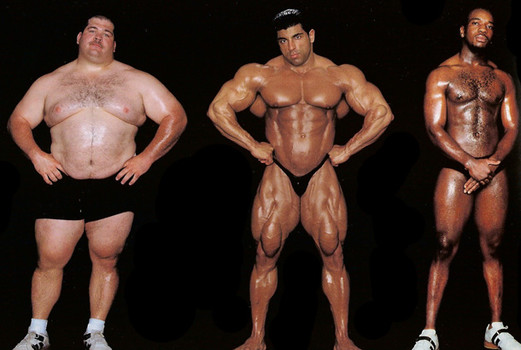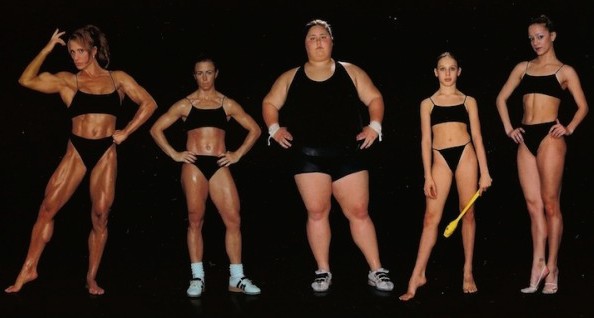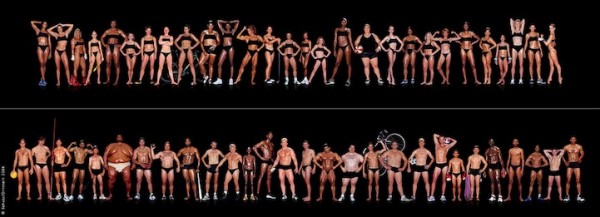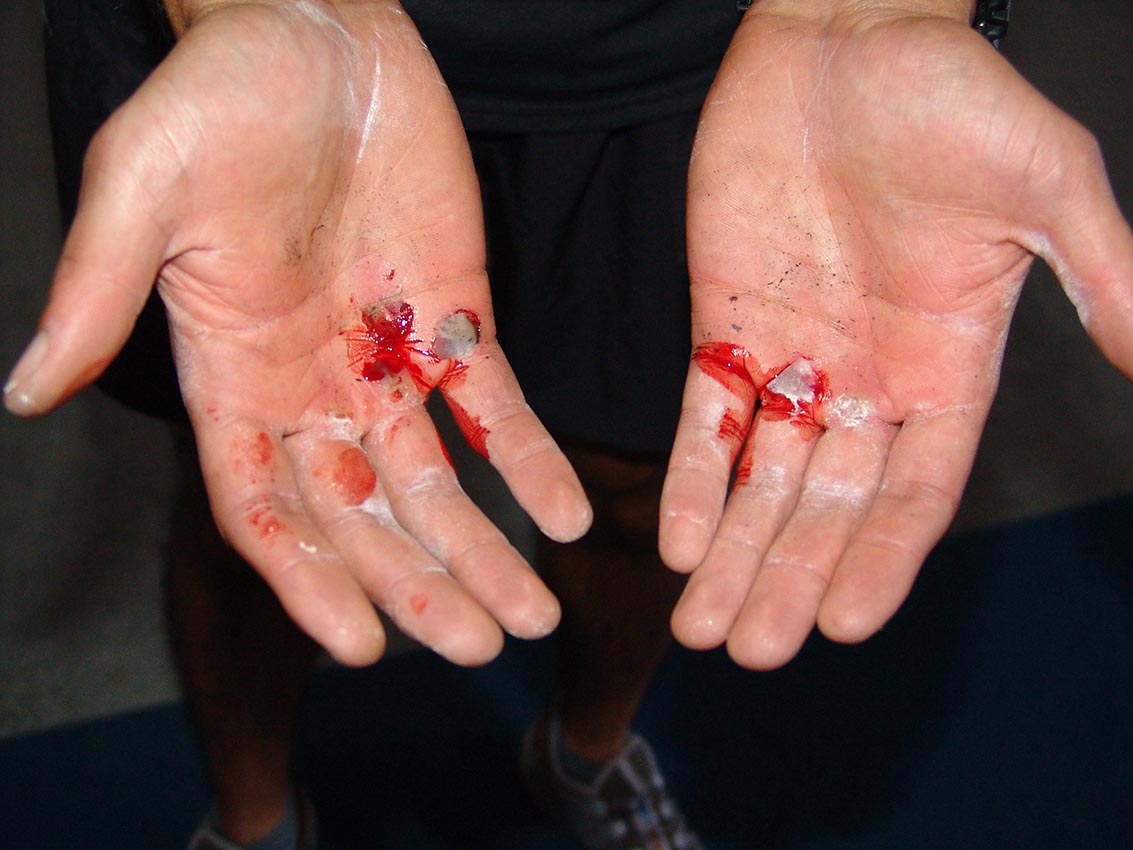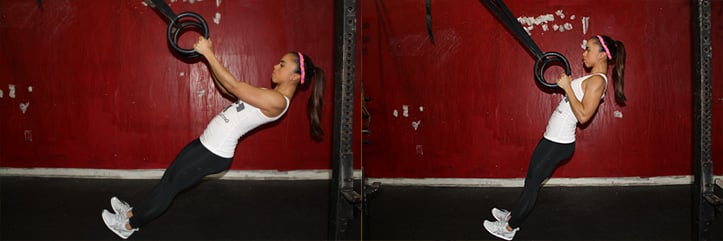Body Types
We come in all shapes and sizes, us humans. Do a little people watching and that's pretty obvious. And life is a bit like a poker game in that you can't control your starting hand. Like it or not, you have to play the cards you're dealt.
Could you toss your cards to the side? Sure. Lots do, don't they? They throw them right into the muck. It's only one game though, this life. No re-upping. And if you're reading along right now chances are good that you've decided folding your hand isn't an option. You refuse to be the first one to bust.
Yet the issue is still the same as the start-- even a peek at someone else's cards isn't going to change your own.
Basic human science explains we are all born with genetics which includes a predetermined body type set by our DNA. To a large extent, your make and mold is the result of centuries of ancestry. But your potential, your future within yourself, that, fellow card sharks, is up to you.
Let's ante up and look deeper into this notion.
The stress of physical work, particularly the central nervous system response to heavy lifting or quick, explosive movements, creates a positive surge in human growth hormones. Namely androgen. Others as well, but it's androgen that gets the focus when looking directly at muscle growth. Two of those androgen amino acids specifically responsible for the anabolic effect of muscle protein synthesis are the well-known testosterone and estrogen. [1] [2] [3]
We all have these hormones running through our bodies. Both men and women. Women release testosterone just like men do; men release estrogen like women do. It's just in different amounts. That's what separates the genders. [1] [2]
Thanks to the pituitary gland during puberty and the endocrine system throughout life our gender-specific responses to age and daily living cause the excretion and regulation of our body hormones.
In layman's terms? Your brain and your body combine to make you you.
 It's this percentage of varying hormone chemicals that creates your starting hand. That and your ancestral DNA. From there the game is on-- it is our job to make the most of ourselves. The goal is to hit a lucky streak in life, isn't it? But if you know poker, then you know it's not just a game of luck. Depending on the style of game you can change your strategy, play off of percentages, turn over new cards, or even read opponents and embedded risk. But in the end it's the strength of your final hand that's the real measure. In other words, overall health and well-being, if you're following along here.
It's this percentage of varying hormone chemicals that creates your starting hand. That and your ancestral DNA. From there the game is on-- it is our job to make the most of ourselves. The goal is to hit a lucky streak in life, isn't it? But if you know poker, then you know it's not just a game of luck. Depending on the style of game you can change your strategy, play off of percentages, turn over new cards, or even read opponents and embedded risk. But in the end it's the strength of your final hand that's the real measure. In other words, overall health and well-being, if you're following along here.
To continue the analogy, some people realize they scrapped their hand way too soon when they could've simply pursued a different angle. Like, say, being active and monitoring nutrition.
In the game of life, our fitness is what we make of it. But there are rules. There are limits.
Our body types run the gamut of different styles, but the three main somatotypes have historically been referred to as ectomorph, mesomorph, and endomorph.
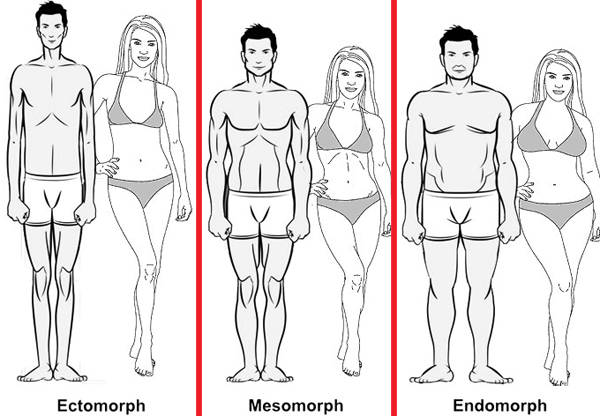
• An ectomorph is typically skinny and lean, usually taller with long limbs and thin muscles. Ectomorphs find it hard to gain weight with their generally fast metabolism burning up calories. [1]
• A mesomorph is naturally athletic in build with larger muscles. Mesomorphs find it relatively easy to gain and lose weight. Although they gain body fat more easily than ectomorphs, they are genetically strong and inherently build muscle quicker than any other body type. [1]
• An endomorph is usually solid and generally bigger but is sometimes labeled "soft." Endomorphs gain fat very easily but do carry some inherent strength. Endomorphs are often shorter in stature but can have strong and muscular limbs, legs in particular. [1]
Within these very generalized physical categories can exist other partial somatotypes combining the larger headings. For instance, an ecto/meso or a meso/endo body type.
While this terminology isn't super important, it does help set up the understanding of one's body. And it exposes the asinine statement of, "I want to look like him/her!"
Sorry, folks. In examining physical fitness, you will always remain you. Just a new and improved version of you. With nourishment, work, and recovery people will look like the fittest rendition of themselves.
For both men and women, if the real goal in your fitness journey is to look like a completely different person then that isn't actually possible. Yes, of course, we can build muscle fibers, both fast and slow twitch, which also means we develop both the number of muscle cells as well as the size of pre-existing muscle cells. We can gain speed as well as endurance. Conversely, we are able to drop excess body fat and change body composition into a healthier us, if needed and desired. But we will only do all of this according to the potential and limitations we were born with.
This is known as a person's genetic predisposition.
Similar to the above, other unhealthy statements we sometimes hear in the gym are "I don't want to do too much cardio and become a stick," or "I don't want to lift heavy because I don't want to get bulky." Or worse, from some young ladies out there, "I don't want to look like a man." Nails on the chalkboard.
Great news, if that's your worry: you won't. You can't.
It doesn't mean a person can't get stronger, faster, and in some ways, larger in size... even more "toned" or "cut" as body fat falls. What it does mean is that we can only do all of this according to 1) our gender, and 2) what our genes will allow.
Again, it's simple, in a way: you can't turn into a different person. No one will change their body type without artificial means.
If you truly want to look like someone else, get plastic surgery. Plenty in the world do this; no judgement passed. Hormone therapy is part of gender modification. All well and good if that's a person's goals. But again, it's artificial. Just like it would be to look for complete body modifying fitness gains. This includes illegal growth hormones, anabolic steroid use, and to an extent, blood doping. [1]
The only way to do something to your body beyond what is genetically possible is artificially.
What we really need to be examining, then, is eustress and the endocrine response. The real statement should be, "I want to be the fittest, fastest, strongest ME."
This, this, is a quality statement. This is a healthy path to fitness. This, my friends of all shapes and sizes, is absolutely possible.
Instead of comparing your physique to others, the healthier mental exercise is to compare your body to your previous self. And frankly, many people out there put a lot of worry into aesthetics anyway, versus result-driven data like work completion (rounds, reps, weight, etc.) or overall positive feelings and self-affirming emotions.
So as you examine your true goals in and outside of the gym, take this to heart. It isn't a deterrent from seeking what it is you want from your body. Hell no. No, this is the opposite. What you want, athletically, can actually be obtained as you realize what genetics you've been given from your ancestors. What hand you've been dealt in this life. If you are gunning for strength, that's doable. Definitely. If your weakness is conditioning, then cardiorespiratory endurance can improve. Unquestionably. If your coordination, your agility, your overall athleticism is lacking, it can all come to fruition as you develop within your life journey.
So go out and get it. Go "all in" if you must. Don't let anyone tell you you can't. But remember you are your own person and will remain just that. Be smart enough that if anyone tries to sell you otherwise, you can see through their bluff. Don't put effort into trying to be a different person, in a different body. Work to be the best in your own skin, and love the life you have.
Good luck, all. The cards are on the table, the stakes have been raised; it's your move. Don't fold now.
- Scott, 7.14.2014



